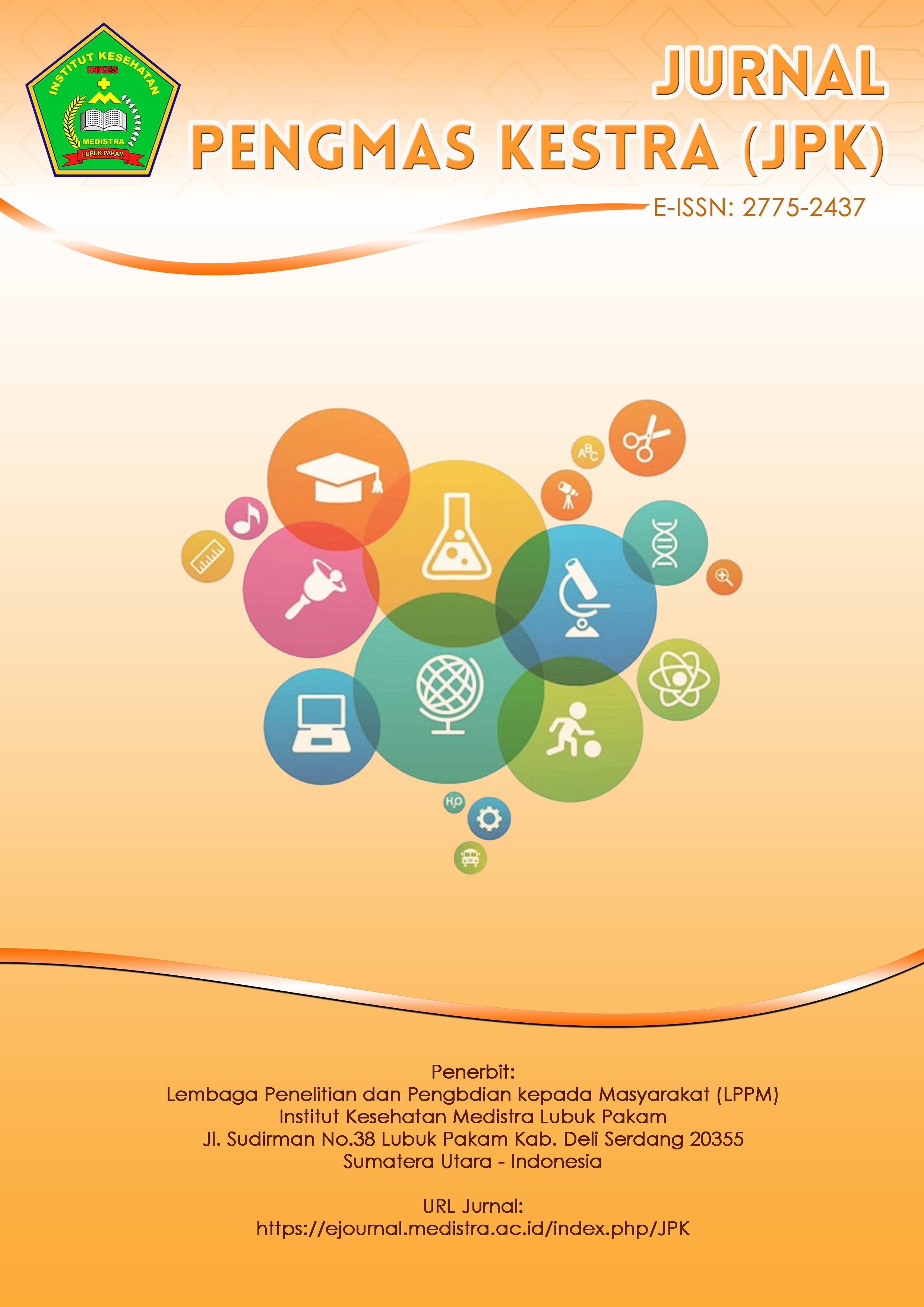PENYULUHAN PEMANFAATAN POSBINDU UNTUK MENDETEKSI PENYAKIT TIDAK MENULAR
DOI:
https://doi.org/10.35451/jpk.v1i2.891Keywords:
Utilization, Posbindu, Non-Communicable Diseases (PTM).Abstract
Non-communicable diseases (NCDs) are the leading cause of death in the world. Deaths every year are caused by PTM. The prevalence of non-communicable diseases in Indonesia from 2007 – 2018 has increased, such as diabetes, hypertension, stroke, joint/rheumatic diseases. Posbindu PTM is a form of community participation in activities for early detection, monitoring and early follow-up of risk factors for Non-Communicable Diseases independently and in delivery. The PTM Posbindu is a form of community effort (UKM) which then develops into a community-based health effort (UKBM) through promotive and preventive efforts to detect and control early on the presence of PTM risk factors in an integrated manner. This activity aims to provide health education about the use of Posbindu to detect non-communicable diseases and increase knowledge and change attitudes about infectious diseases. The method of implementing the activity is using observation sheets and questionnaires about the use of posbindu in Petapahan sub-district to detect non-communicable diseases. From the results of the activities carried out, the community was very enthusiastic about welcoming this activity. Through this activity, it is hoped that public knowledge can increase and change behavior to be healthy so that it can extend life expectancy. Through this activity, it is also useful for cadres, namely increasing cadre knowledge about posbindu and cadres skills in checking weight, height, measuring abdominal circumference, blood pressure, checking blood sugar, cholesterol and uric acid, so that posbindu activities carried out can be used as detection. early non-communicable diseases and attacks.
Downloads
Published
Issue
Section
License
Copyright in each article is the property of the Author.




















